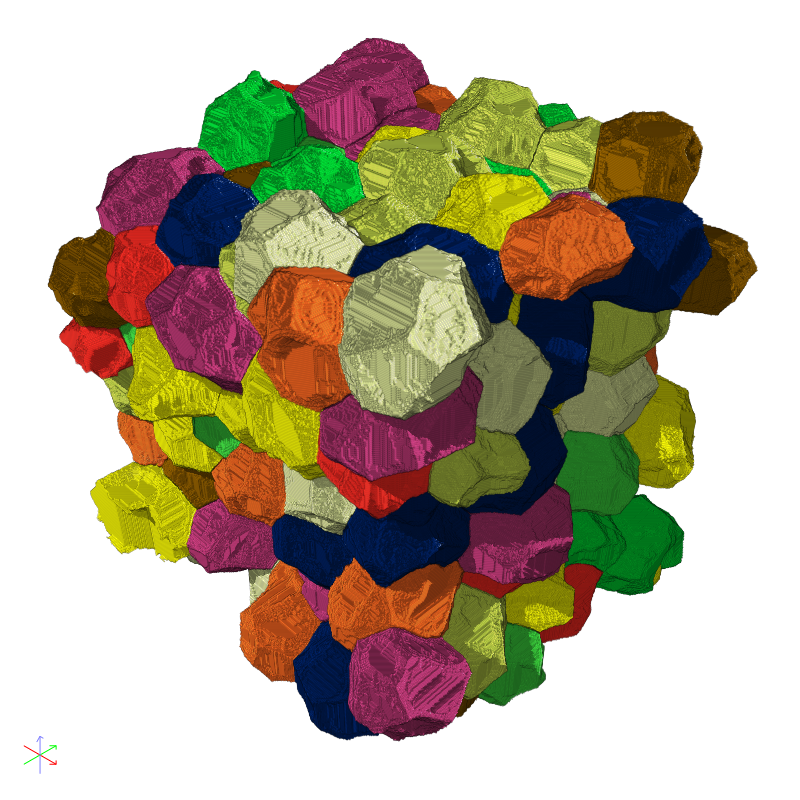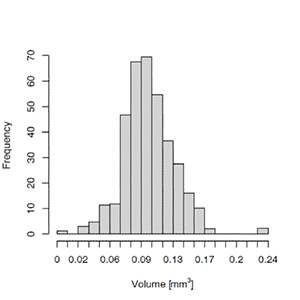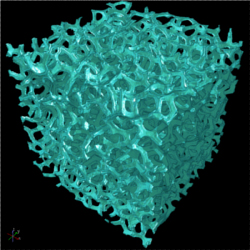The strut system of open cell foams can usually be easily segmented (separated from the pore space). Given the resulting image with the strut system as foreground, porosity, specific surface area, and mean strut length per volume can be measured. Under mild model assumptions, further foam specific mean characteristics like the mean cell volume are derived. Pores inside struts are dealt with separately by filling these holes morphologically.
Analysis of Open Foams
These mean values do however not capture the variability e.g. of the cell size. The Euclidean distance transformation on the pore space followed by the watershed transformation tessellates the pore space into cells. Based on this, image analytic reconstruction of the cells empirical distributions of cell characteristics like volume or shape can be determined.
The spherical granulometry on the strut system yields the local strut thickness distributions. Both local strut thickness and the pore size distribution can be used to fit stochastic geometry models to the structure.
Report: Microstructural Characterisation of Open Foams Using 3d Images

Image-analytically separated cell system.

Empirical Cell Size Distribution of Nickel-Chrome Foam
Publications
- Losch, K.; Schladitz, K.; Ballaschk, U.; Berek, H.; Aneziris, C.G.:
Interrupted In-Situ Compressive Deformation Experiments on MMC Foams in an XCT.
Image, Analysis & Stereology 33, No.2, pp. 131-145, (2014). - Vecchio, I.; Redenbach, C.; Schladitz, K.:
Angles in Laguerre Tessellation Models for Solid Foams.
Computational Materials Science, Volume 83, pp. 171-184, (2014). - Schladitz, K.; Redenbach, C.; Sych, T.; Godehardt, M.:
Model Based Estimation of Geometric Characteristics of Open Foams.
Methodology and Computing in Applied Probability, pp. 1-22, (2011).

